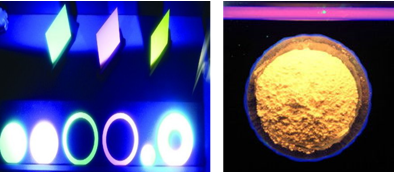 Feng, X., Hu, J. Y., Redshaw, C., et al. Chemistry–A European Journal. (2016, 22(34), 11898-11916.
Feng, X., Hu, J. Y., Redshaw, C., et al. Chemistry–A European Journal. (2016, 22(34), 11898-11916.
Due to its large planar conjugated aromatic system, pyrene exhibits a high tendency for p-stacking and quasi molecular formation in condensed media, and is prone to quenching emission, resulting in a low photoluminescence quantum yield (PLQY). Therefore, in order to further improve its optical properties, recent research has mainly focused on functionalizing it.
Functionalization of Pyrene
• Formylation/Acetylation of Pyrene: Miyazawa developed a step-by-step synthesis route for 4,5,9,10-tetramethylpyrene using carbal-dehyde 7 as the starting material. Reduction of 7 with LiAlH4 in ether afforded 2,7-di-tert-butyl-4-methylyrene in 87% yield. Subsequently, treatment of 10 with Cl2CHOCH3 in the presence of TiCl4 as catalyst gave a mixture of methylpyrene 11-13. By repeating the two steps of reduction and formylation, a single 2,7-di-tert-butyl-4,5,9-trimethylpyrrole was obtained, which could further participate in formylation and reduction to obtain 20. This method provides a clear strategy to methylate the pyrene building blocks through a Lewis acid-catalyzed process in the K region, i.e., 4-, 5-, 9-, and 10-positions.
• Bromination of pyrene: In the presence of iron powder, 2,7-di-tert-butylpyrene undergoes bromination reactions with 1.1 mole equivalents and 2.2 mole equivalents of bromine, respectively, to obtain a mixture of 1-bromo-2,7-di-tert-butylpyrene (45) and 1,6-dibromo-2,7-di-tert-butylpyrene (46) and 1,8-dibromo-2,7-di-tert-butylpyrene (47), with contents of 85% and 73%, respectively. These compounds can be further brominated with excess bromine under iron catalytic conditions to obtain 44.
• Oxidation of pyrenes: Using RuCl3 as a catalyst and NaIO4 to oxidize pyrene (R=H and tBU) in CH2Cl2 medium, diketone 77 and tetraketone 78 were obtained at different stoichiometric ratios of bromine reagents. This route uses highly valuable RuCl3.
• Borylation of Pyrene: Since Marder and his colleagues first reported a new boronation reaction method for the one-step catalytic synthesis of pyrene-2-boronate ester 102, and pyrene-2,7-bis(boronate) ester 103 with yields of 68% and 97%, many new 2,7-di substituted pyrene compounds have been reported. Liu reported on the regioselective addition of 2,4,7-bis (boronic) ester 103 to the B2 n-hexane of B2 in n-hexane, resulting in a yield of 62% to obtain 2,4,7-triazine pyrene 104. Similarly, under the same conditions, the boronation reaction of 2,7-tert-butylpyran resulted in a yield of 45% to obtain 4-Bpin-2,7-di-tert-butylpyrene 105.


 Fig.1 The application of luminescent materials
Fig.1 The application of luminescent materials Fig.2 OLED materials in displayer, illumination and medical fields
Fig.2 OLED materials in displayer, illumination and medical fields Fig.3 Photoluminescence materials: fluorescent powder
Fig.3 Photoluminescence materials: fluorescent powder Fig.4 The application of Nonlinear optical materials in fiber-optic and nuclear fusion field
Fig.4 The application of Nonlinear optical materials in fiber-optic and nuclear fusion field Zhou, Jing, et al. Chemical reviews. 2015;115(1):395-465.
Zhou, Jing, et al. Chemical reviews. 2015;115(1):395-465. Zhu, Xingjun, et al. Chemical Society Reviews. 2017;46(4):1025-39.
Zhu, Xingjun, et al. Chemical Society Reviews. 2017;46(4):1025-39. Feng, X., Hu, J. Y., Redshaw, C., et al. Chemistry–A European Journal. (2016, 22(34), 11898-11916.
Feng, X., Hu, J. Y., Redshaw, C., et al. Chemistry–A European Journal. (2016, 22(34), 11898-11916.